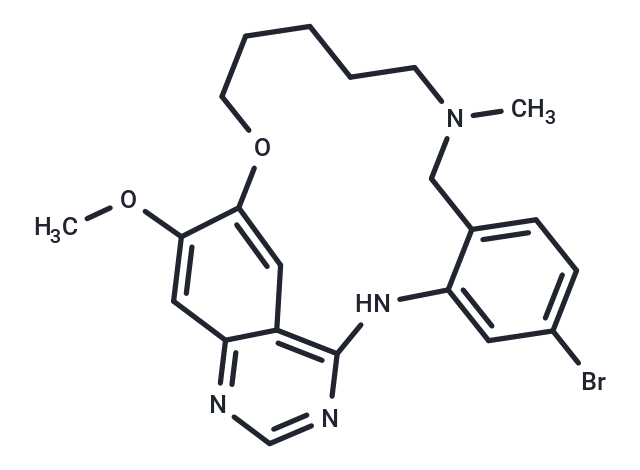Shopping Cart
- Remove All
 Your shopping cart is currently empty
Your shopping cart is currently empty

BGB-102 (JNJ-26483327) is a kinase inhibitor targeting FLT3 and YES1 and an antagonist targeting EGFR and VEGFR3, which may be useful in the study of macular degeneration and diseases associated with genetic disorders and malformations.

| Pack Size | Price | Availability | Quantity |
|---|---|---|---|
| 1 mg | $328 | In Stock | |
| 5 mg | $818 | In Stock | |
| 10 mg | $1,080 | In Stock | |
| 25 mg | $1,630 | In Stock | |
| 50 mg | $2,190 | In Stock |
| Description | BGB-102 (JNJ-26483327) is a kinase inhibitor targeting FLT3 and YES1 and an antagonist targeting EGFR and VEGFR3, which may be useful in the study of macular degeneration and diseases associated with genetic disorders and malformations. |
| Targets&IC50 | EGFR:9.6 nM, HER2:18 nM, 18 nM:HER4 |
| In vitro | Herceptin was combined with pan HER inhibitor BGB-102 ( 1,5 or 10 μM ) to treat SKBR3 cells for 1 hour. The results showed that herceptin combined with BGB-102 could terminate the PKB feedback loop and had a synergistic effect in inhibiting the growth of xenograft tumors[1]. |
| In vivo | BT474 xenografts were treated with vehicle control, BGB-102 (75 mg/kg, orally twice daily), Herceptin (10 mg/kg;ip), or combination therapy of BGB-102 and Herceptin for 21 days, followed by observation for 120 days. The results indicated that the combination therapy of Herceptin with BGB-102 delayed the growth of BT474 xenograft tumors[1]. |
| Alias | JNJ-26483327 |
| Molecular Weight | 457.36 |
| Formula | C22H25BrN4O2 |
| Cas No. | 807640-87-5 |
| Smiles | BrC1=CC=C2C(=C1)NC=3N=CN=C4C=C(OC)C(OCCCCCN(C)C2)=CC43 |
| Relative Density. | 1.310 g/cm3 (Predicted) |
| Storage | store at low temperature | Powder: -20°C for 3 years | In solvent: -80°C for 1 year | Shipping with blue ice. |

Copyright © 2015-2025 TargetMol Chemicals Inc. All Rights Reserved.